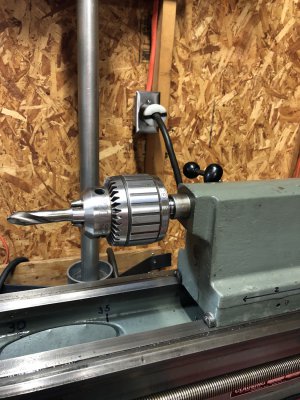All,
Newbie here. For my Bridgeport, I’m turning a 15/32 radius on the bottom of large adjuster screws. And I also need to turn a matching concave radius in the 3/8” base plates the screws will seat on.
My question is on set up for turning (vs milling) the concave radius on base plates.
I’ve read a number of posts about never using end mills in a drill chuck because of rigidity, etc. And it makes perfect sense.
However, is it ok to peck drill a radius with a 15/16” ball nose end mill in a Jacobs chuck in the tailstock in this set up? Only going in the plates about .200”. In this case, aren’t the forces on a ball nose end mill basically the same as a drill bit? There shouldn’t be any forces 90 degrees to the drill chuck like a normal end mill.
Anything wrong with this?
Thanks!
Gordon
Newbie here. For my Bridgeport, I’m turning a 15/32 radius on the bottom of large adjuster screws. And I also need to turn a matching concave radius in the 3/8” base plates the screws will seat on.
My question is on set up for turning (vs milling) the concave radius on base plates.
I’ve read a number of posts about never using end mills in a drill chuck because of rigidity, etc. And it makes perfect sense.
However, is it ok to peck drill a radius with a 15/16” ball nose end mill in a Jacobs chuck in the tailstock in this set up? Only going in the plates about .200”. In this case, aren’t the forces on a ball nose end mill basically the same as a drill bit? There shouldn’t be any forces 90 degrees to the drill chuck like a normal end mill.
Anything wrong with this?
Thanks!
Gordon


